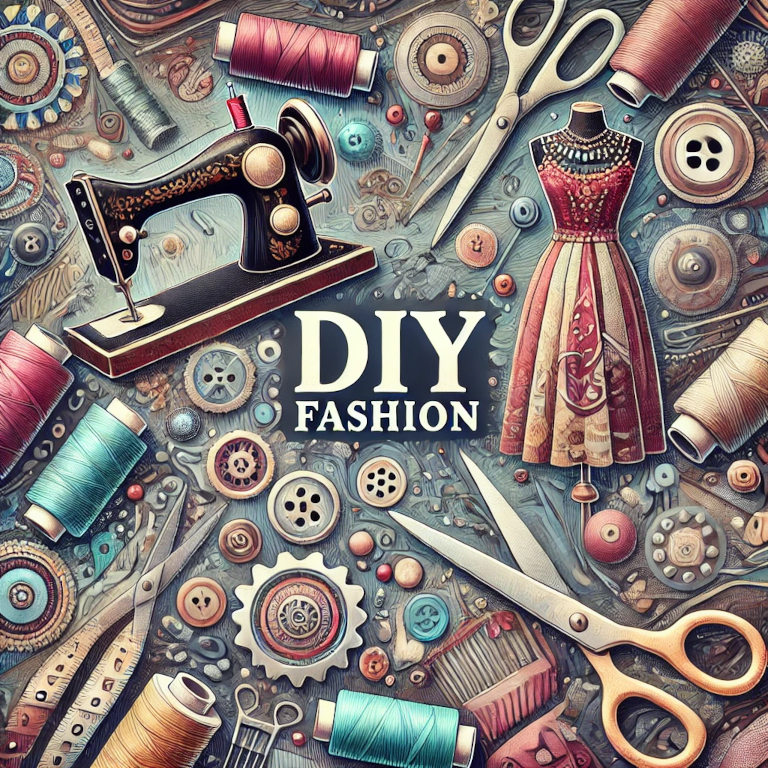DIY fashion has become a popular trend in the world of fashion and beauty, offering individuals the opportunity to express their creativity and personal style while being mindful of sustainability and cost. As an expert in Fashion and Beauty, this article will explore the concept of DIY fashion, its benefits, and practical tips for getting started.
Understanding DIY Fashion
DIY (Do It Yourself) fashion involves creating, altering, or customizing clothing and accessories to suit your personal style. This trend is not only about making unique fashion statements but also about fostering a sense of individuality and empowerment. From upcycling old garments to crafting new pieces from scratch, DIY fashion allows you to take control of your wardrobe in a creative and sustainable way.
Benefits of DIY Fashion
- Personal Expression: DIY fashion provides a platform for personal expression. By creating your own designs, you can showcase your unique style and stand out from the crowd.
- Sustainability: In a world increasingly concerned with environmental impact, DIY fashion promotes sustainability by encouraging the reuse and repurposing of existing materials.
- Cost-Effective: Creating your own fashion pieces can be more affordable than purchasing new items, especially designer labels. It allows you to update your wardrobe without breaking the bank.
- Skill Development: Engaging in DIY fashion projects helps develop valuable skills such as sewing, knitting, and fabric painting, which can be both practical and rewarding.
Getting Started with DIY Fashion
1. Upcycling Old Garments
Upcycling involves taking old or worn-out clothing and transforming it into something new and stylish. Here are some ideas to get you started:
- Denim Reworks: Convert old jeans into trendy shorts or a stylish denim skirt. Add embellishments like patches, studs, or embroidery for a unique touch.
- T-Shirt Transformations: Cut and tie-dye an old t-shirt to give it a fresh look. You can also turn oversized shirts into fitted tops or crop tops.
- Sweater Restyling: Turn a worn-out sweater into a cozy cardigan by cutting it down the middle and adding buttons or a zipper.
2. Customizing New Pieces
If you prefer starting with new items, consider customizing plain clothing to make it your own:
- Fabric Paint and Markers: Use fabric paint or markers to create custom designs on plain t-shirts, jackets, or canvas shoes. This can include anything from abstract patterns to personalized messages.
- Embroidery and Appliqué: Add intricate embroidery or appliqué patches to jackets, jeans, or bags for a personalized and artistic touch.
- Beading and Sequins: Enhance the look of a plain dress or top by sewing on beads or sequins to create patterns or highlight specific areas.
3. Making Accessories
DIY fashion isn’t limited to clothing. You can also create your own accessories to complement your outfits:
- Jewelry: Craft your own earrings, necklaces, and bracelets using beads, wire, and charms. Personalized jewelry can make a bold fashion statement.
- Scarves and Headbands: Sew or knit scarves and headbands using fabrics and patterns that match your style. These can be great beginner projects.
- Bags and Purses: Create custom bags and purses by repurposing old fabrics or using new materials. Add pockets, zippers, and embellishments to suit your needs.
Essential Tools and Materials
To get started with DIY fashion, you’ll need some basic tools and materials. Here are a few essentials:
- Sewing Machine: A good sewing machine can make your projects faster and more professional-looking. For beginners, a basic model with essential functions is sufficient.
- Sewing Kit: Include needles, thread, scissors, pins, and measuring tape in your sewing kit.
- Fabric and Notions: Stock up on various fabrics, buttons, zippers, and trims to have a wide range of options for your projects.
- Fabric Paints and Markers: These are great for adding personalized designs to your creations.
- Embroidery Supplies: If you plan to do embroidery, you’ll need embroidery floss, needles, and hoops.
Tips for Success
- Start Simple: Begin with easy projects to build your confidence and skills. As you become more comfortable, you can tackle more complex designs.
- Learn from Others: Follow DIY fashion blogs, watch tutorials on YouTube, and join online communities to learn new techniques and get inspiration.
- Experiment: Don’t be afraid to try new things and make mistakes. DIY fashion is all about creativity and exploration.
- Plan Your Projects: Take time to plan your projects before you start. Sketch your ideas, choose your materials, and gather all necessary tools.
- Practice Patience: Some projects may take time and practice to perfect. Be patient with yourself and enjoy the process.
Summary
DIY fashion empowers individuals to create unique, personalized clothing and accessories while promoting sustainability and cost-effectiveness. By upcycling old garments, customizing new pieces, and making your own accessories, you can express your personal style and develop valuable skills. With the right tools, materials, and a bit of creativity, anyone can embark on a DIY fashion journey and transform their wardrobe into a reflection of their individuality.






